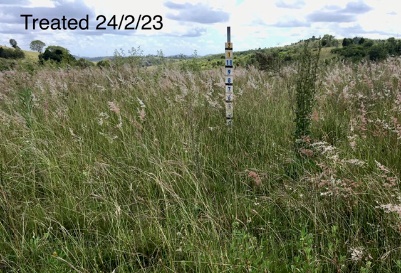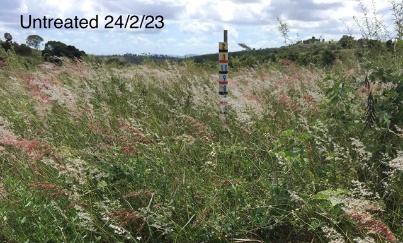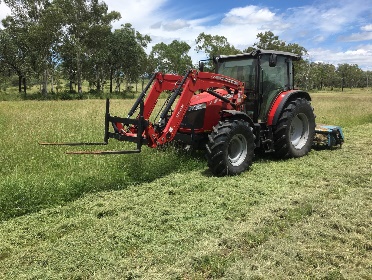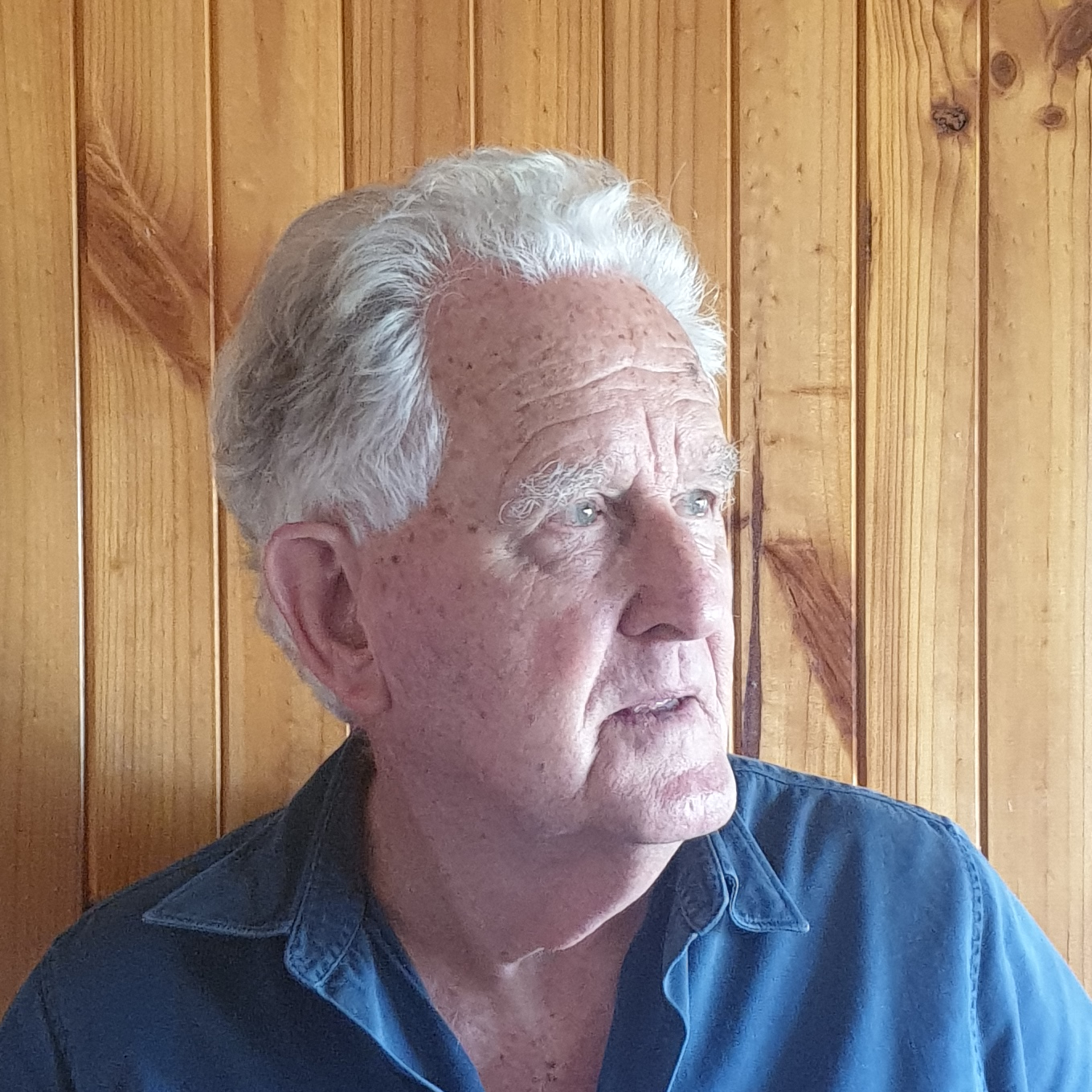Bio-Booster, Sea Minerals and Humic acid were applied on two properties to sections of native pastures that had not been grazed One treated area showed increased growth and leaf Brix readings. Additionally, chicory seeded with the Bio-Booster show larger plants and flowers.
The second trial on a nearby property was mulched, with the grazier reporting significantly more dry matter present.
Background
This ongoing demonstration aimed to show the effects of stimulating soil biology in grazing land. An indication of potential results had been shown in one of our earlier case studies, where Brent went from 30 steers to 90, tripling his farm’s carrying capacity in just 20 years.
Bio-Booster is a high concentration of soil microbiology containing a wide range of species needed for a healthy soil biology. Liquid Sea Minerals and humic acid were applied to support and stimulate the soil biology. The aim is to speed-up building soil carbon the way nature does it. This method is low cost, can be home-grown in five days and has been tested in soybeans and macadamias with very promising results.
Following a workshop in November 2021, participants then built application equipment, started a worm farm, prepared a Starter, grew the soil biology, and then applied the treatment on 18 February 2022. A microscopic quality check was undertaken, and pasture measuring posts were installed at application.
Treatments
Bio-Booster at 100 L/ha along with Liquid Sea Minerals at 5L/ha and Humic acid at 15 L/ha was applied on two properties on the same day. The owner of the first property treated part of a 2.5 Ha paddock, and the owner of the nearby second property treated a section of a paddock on his place. Treatments were applied behind a ripper. Control areas were also ripped to ensure that any difference in measurements was due to the treatment alone and not to ripping.
The owners of the first property also included seeding a number of pasture species to increase diversity in soil biology and stock-feed. Chicory (Cichorium intybus) was sown in both treated and untreated areas.
Stock were excluded from the paddocks to allow new species to mature and seed.
Observations
7 June 2022
The owners of the first property observed that the grass near ground level was noticeably denser in the treated area compared to the control area.
29 June 2022
140 days after planting Trevor Galletly and the owners of both properties conducted a visual inspection and did leaf refractometer readings of Siratro in the treated and untreated areas at the first property.
Leaf refractometer readings indicate the relative level of plant sugars in the leaf and are a good indicator of the plant’s health and nutritional value. What is poor, average, good or excellent varies between species, but a higher reading is better than a lower one.
Chicory had emerged in treated and control areas. Few of the other sown species had emerged.
At application, the pasture was native species at 5 – 20 cm height. As native grass species vary across the paddock, detailed assessments of growth were made for three species in both control and treated sections.
| Control/Treated | Result | |
|---|---|---|
| Black spear grass | Control | 50cm |
| Treated | 60cm (increased by 10cm) | |
| Native blue grass | Control | 10cm |
| Treated | 15cm (increased by 5cm) | |
| Siratro over Black spear grass | Control | 55cm |
| Treated | 65cm (increased by 10cm) | |
| Leaf refractometer reading on Siratro (measured in Brix) | Control | 12 Brix |
| Treated | 14 Brix (increased by 2 Brix) |
Chicory plants in the treated area were generally broader leaved and taller.
One effect of excluding cattle from both treated and control areas was an increase of desirable pasture species favoured by cattle. Continuous grazing gradually leads to the loss of these species.


February 2023
Mulching at the second property, giving at least 20% more mulch.



Comments
The inspections showed that treated areas have more growth than control areas.
Tables for Approximate Relationships between pasture height and Kilograms of Dry Matter/Ha (kgDM/Ha) indicate that a 10 cm height increase can add 3,000 kg of DM/Ha.
To put this into perspective, an average 600Kg cow can require 18 kg Dry Matter per day to thrive and produce milk. Assuming 50% is trampled or spoiled, the extra Dry Matter eaten is 1,500 kg and represents 83 grazing days or 2 and a half months per hectare for a fully grown animal or 5 months for a heifer. The trampled part and larger root system will feed the soil-biology, thus increasing future carbon in the soil with all its benefits.
This treatment can be applied to additional paddocks as planned, which will allow for a slow build-up of stock numbers, which is a major cost.
Indicative Cost of the Treatment
The indicative cost of treatment is approximately $26 per hectare, which includes $6–$8 per hectare for Bio-Booster (based on a 1,000L unit costing $60–$80, enough to treat 10 hectares), and $18 per hectare for 3L of sea minerals and 3L of humic acid. This estimate excludes tractor operating costs and assumes that application equipment is already available on the farm.
Conclusion
The use of Bio-Booster has increased soil biological activity and given increased growth of pasture by improving the soil and increasing carbon levels.
The benefits are very promising, and the costs are minimal.
These results are consistent with findings in other crops.

